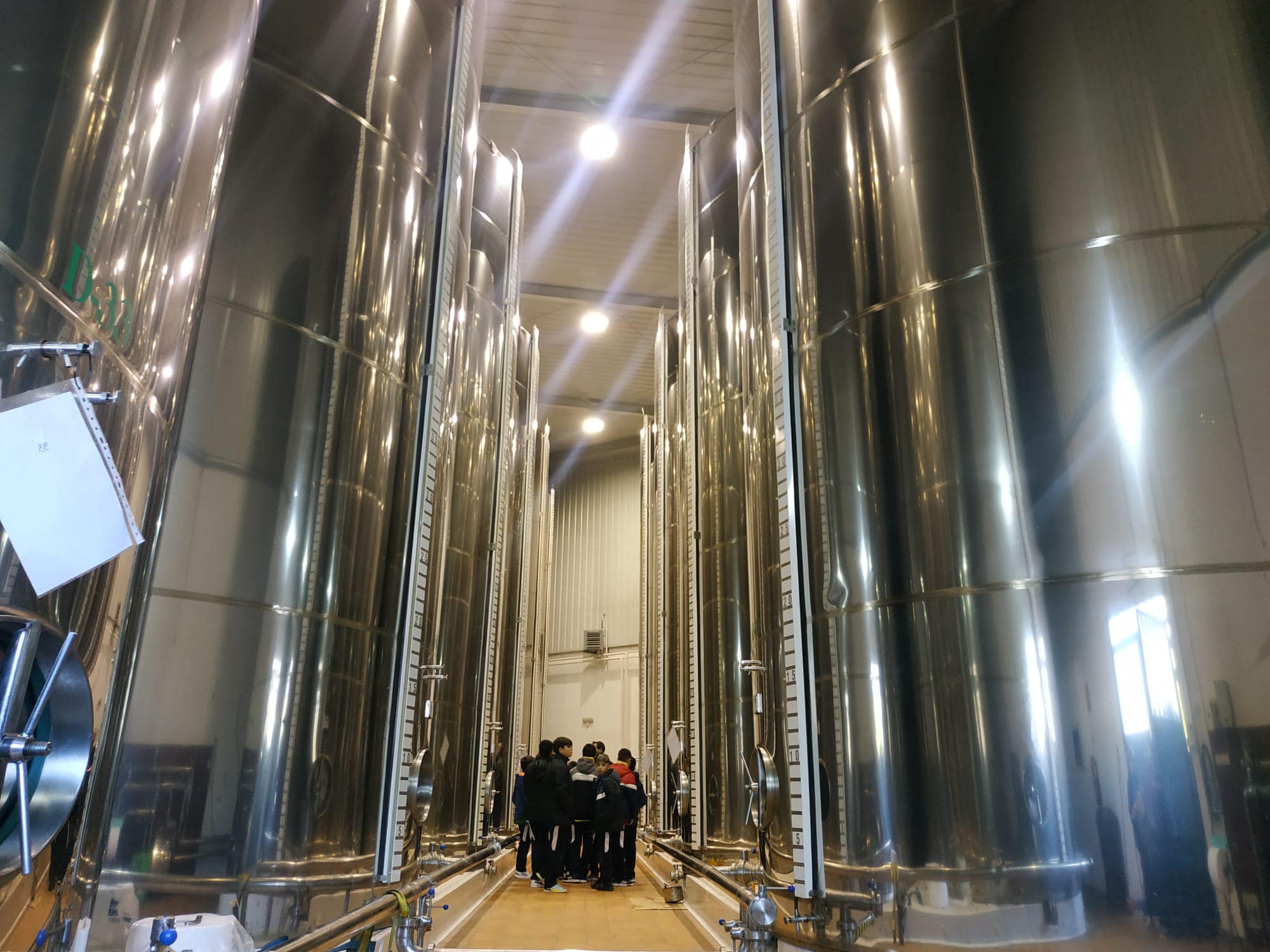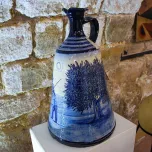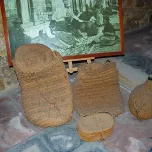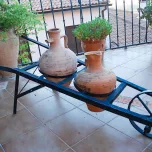By 8th grade students SANTO DOMINGO SAVIO SCHOOL, Spain
The harvest of olives occurs from November to February (or March), which makes the unemployment rate of the province of Jaen fall to 10%. This fall is because, despite the use of machines, a significant part of the harvest is still made manually, to preserve the quality of the olives.
Nets are laid out beneath the trees and the branches are variously shaken by hand or with a small mechanical branch shaker or struck with heavy poles. Loaded into carts they are then taken to the local olive oil mill (ALMAZARA), often a cooperative. There are hundreds of mills and cooperatives in Jaén, most with their own label. The olives are separated from the detritus of leaves and small branches and then washed and allowed to dry. They are then cold pressed to produce a cloudy, first press, extra virgin olive oil. In some speciality shops it is possible to buy oil in this state and much of the home-produced oil consumed by the families that own the olive groves will be in this form. The bulk of the oil is clarified by allowing it to rest or by a centrifuge process. To maintain the quality of the oil the first press is done within 24 hours of the olives having been picked.
While the majority of olive oil production still comes from traditional growers in the Mediterranean, newer farms are focusing on more sustainable and organic olive growing practices. The aim is to ensure that the production is obtained from trees that have been carefully cultivated on healthy and clean soils.
Agriculture is a physically demanding job and olive farming in particular.It requires dedication and very solid know-how. Although some farmers still follow the teachings of their great-grandparents (and great-great-grandparents) and sometimes rely on the lunar phases for some of their activities, most of the young people today, who want to dedicate themselves to and continue this "hard" tradition, are taking intermediate degrees (Vocational Education) and even university master's degrees dedicated to olive oil.
It is therefore necessary to help the teaching community to transmit to future generations the importance of the olive sector and olive oil culture as elements of our socio-cultural identity.
Taking advantage of this interest, groups of students from our school have been visiting olive mills and The Olive Oil Museum in our town where people can taste the local olive oils, from Picual to Hojiblanca or Arbequina, presented in bottles with pink foil, scenes of birds or abstract designs as well as more traditional style bottles. There are olive oil cosmetics and lotions, chocolate bars made with olive oil and cookbooks featuring the region’s main lifeblood: olive oil. It is the rare visitor that leaves with no sample of ‘liquid gold’ tucked under arm. 






Thank you very much dear Maria. I would love to add something important, When you say Olive and Olive oil, it comes to mind at first Turkey??? Türkiye is a heaven of olive
And it's important to teach our students that it is part of our identity, our history and tradition.
I totally agree with you ?
Dear Maria,
Thanks a lot for this interesting article!
In June 2022, Choisis Ta Planète's filming crew was staying in an accomodation close to the Mediterranea sea. Our appartement was surrounded by olive trees that were owned by a family.
One evening, I saw the owner spray pesticides on them. I had a conversation with the man, he told me that he didn't have the choice, he wanted to prevent olive tree fly to destroy the next harvest. Of course, ecological alternatives DO exist but unfortunately, I didn't succeed in convincing him :(
If you know about innovative and green fly management, please share them here.
Thanks,
Farmers can buy sophisticated olive fly traps or make homemade traps by transparent plastic bottle recycling . The most famous and used homemade trap against olive fly is the "olipe trap": It consists of placing 2-litre transparent plastic bottles with several holes in them and filling them with 3 % diammonium phosphate (30 g of phosphate per litre of water). The fly, attracted, enters the bottle and, being transparent, the animal does not detect the exit and is trapped. The traps will be placed in densities between 50 and 70 traps, depending on the number and size of the trees, and preferably in the northern part of the tree.
https://olipe.com/trampa-olipe/ (Spanish)
https://www.oliveoilsource.com/article/economy-olive-fly-trap (English)
Biological control can also be used with the introduction of predatory species of this insect, especially in its soil phase during winter, as well as the use of entomopathogenic fungi in the soil of the crop.
Please log in or sign up to comment.